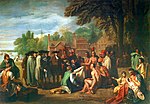
The Dawes Act of 1887 regulated land rights on tribal territories within the United States. Named after Senator Henry L. Dawes of Massachusetts, it authorized the President of the United States to subdivide Native American tribal communal landholdings into allotments for Native American heads of families and individuals. This would convert traditional systems of land tenure into a government-imposed system of private property by forcing Native Americans to "assume a capitalist and proprietary relationship with property" that did not previously exist in their cultures. The act allowed tribes the option to sell the lands that remained after allotment to the federal government. Before private property could be dispensed, the government had to determine which Indians were eligible for allotments, which propelled an official search for a federal definition of "Indian-ness."

The Indian Reorganization Act (IRA) of June 18, 1934, or the Wheeler–Howard Act, was U.S. federal legislation that dealt with the status of American Indians in the United States. It was the centerpiece of what has been often called the "Indian New Deal". The major goal was to reverse the traditional goal of cultural assimilation of Native Americans into American society and to strengthen, encourage and perpetuate the tribes and their historic Native American cultures in the United States.

Indian country is any of the many self-governing Native American/American Indian communities throughout the United States. As a legal category, it includes "all land within the limits of any Indian reservation", "all dependent Indian communities within the borders of the United States", and "all Indian allotments, the Indian titles to which have not been extinguished."
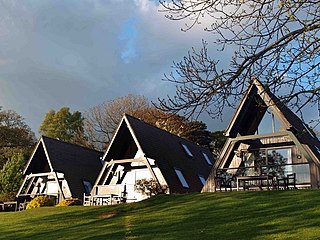
A timeshare is a property with a divided form of ownership or use rights. These properties are typically resort condominium units, in which multiple parties hold rights to use the property, and each owner of the same accommodation is allotted their period of time. Units may be sold as a partial ownership, lease, or "right to use", in which case the latter holds no claim to ownership of the property. The ownership of timeshare programs is varied, and has been changing over the decades.

The Qualla Boundary or The Qualla is territory held as a land trust by the United States government for the federally recognized Eastern Band of Cherokee Indians, who reside in western North Carolina. The area is part of the large historic Cherokee territory in the Southeast, which extended into eastern Tennessee, western South Carolina, northern Georgia and Alabama. Currently, the largest contiguous portion of the Qualla lies in Haywood, Swain, and Jackson counties and is centered on the community of Cherokee, which serves as the tribal capital of the Eastern Band of Cherokee Indians. Smaller, discontiguous parcels also lie in Graham and Cherokee counties, near the communities of Snowbird and Murphy respectively.
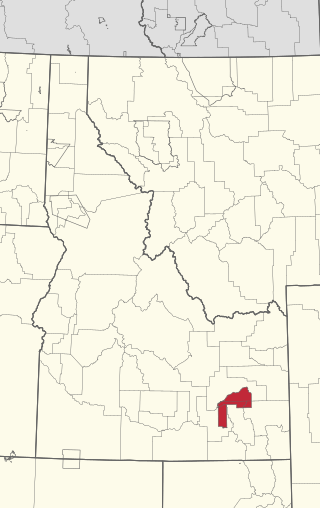
The Fort Hall Reservation is a Native American reservation of the federally recognized Shoshone-Bannock Tribes in the U.S. state of Idaho. This is one of five federally recognized tribes in the state. The reservation is located in southeastern Idaho on the Snake River Plain about 20 miles (32 km) north and west of Pocatello. It comprises 814.874 sq mi (2,110.51 km2) of land area in four counties: Bingham, Power, Bannock, and Caribou. To the east is the 60-mile-long (97 km) Portneuf Range; both Mount Putnam and South Putnam Mountain are located on the Fort Hall Reservation.
There are four treaties of Buffalo Creek, named for the Buffalo River in New York. The Second Treaty of Buffalo Creek, also known as the Treaty with the New York Indians, 1838, was signed on January 15, 1838 between the Seneca Nation, Mohawk nation, Cayuga nation, Oneida Indian Nation, Onondaga (tribe), Tuscarora (tribe) and the United States. It covered land sales of tribal reservations under the U.S. Indian Removal program, by which they planned to move most eastern tribes to Kansas Territory west of the Mississippi River.

The Leech Lake Reservation is an Indian reservation located in the north-central Minnesota counties of Cass, Itasca, Beltrami, and Hubbard. The reservation forms the land base for the federally recognized Leech Lake Band of Ojibwe, one of six bands comprising the Minnesota Chippewa Tribe, organized in 1934. The Leech Lake Reservation has the second highest population of any reservation in Minnesota with White Earth Nation being the largest Minnesota Ojibwe tribe, Leech Lake Nation has a resident population of 11,388 indicated by the 2020 census.
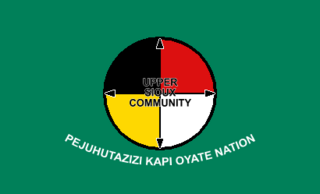
The Upper Sioux Indian Reservation, or Pezihutazizi in Dakota, is the reservation of the Upper Sioux Community, a federally recognized tribe of the Dakota people, that includes the Mdewakanton.
Fractional ownership is a method in which several unrelated parties can share in, and mitigate the risk of, ownership of a high-value tangible asset, usually a jet, yacht or piece of resort real estate. It can be done for strictly monetary reasons, but typically there is some amount of personal access involved. One of the main motivators for a fractional purchase is the ability to share the costs of maintaining an asset that will not be used full-time by one owner.
The Forest Legacy Program was established in the 1990 United States farm bill to protect environmentally important forest lands that are threatened by conversion to nonforest uses. It provides federal funding for conservation easements and fee simple purchases.
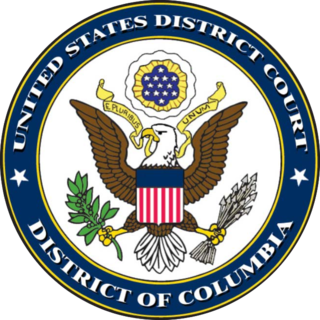
Cobell v. Salazar is a class-action lawsuit brought by Elouise Cobell (Blackfeet) and other Native American representatives in 1996 against two departments of the United States government: the Department of Interior and the Department of the Treasury for mismanagement of Indian trust funds. It was settled in 2009. The plaintiffs claim that the U.S. government has incorrectly accounted for the income from Indian trust assets, which are legally owned by the Department of the Interior, but held in trust for individual Native Americans. The case was filed in the United States District Court for the District of Columbia. The original complaint asserted no claims for mismanagement of the trust assets, since such claims could only properly be asserted in the United States Court of Federal Claims.
Fractional ownership of aircraft is an arrangement in which multiple owners share the use and costs of purchasing and operating an aircraft. Several management companies provide fractional ownership programs for aircraft, including NetJets, Flexjet, Volato, PlaneSense, and AirSprint. Alternatively, owners can join together to purchase their aircraft, independently of a larger management company.

The Fort Belknap Indian Reservation is shared by two Native American tribes, the A'aninin and the Nakoda (Assiniboine). The reservation covers 1,014 sq mi (2,630 km2), and is located in north-central Montana. The total area includes the main portion of their homeland and off-reservation trust land. The tribes reported 2,851 enrolled members in 2010. The capital and largest community is Fort Belknap Agency, at the reservation's north end, just south of the city of Harlem, Montana, across the Milk River.

The Ponca Tribe of Indians of Oklahoma, also known as the Ponca Nation, is one of two federally recognized tribes of Ponca people. The other is the Ponca Tribe of Nebraska. Traditionally, peoples of both tribes have spoken the Omaha-Ponca language, part of the Siouan language family. They share many common cultural norms and characteristics with the Omaha, Osage, Kaw, and Quapaw peoples.
Hodel v. Irving, 481 U.S. 704 (1987), is a case in which the U.S. Supreme Court held that a statute ordering the escheat of fractional interests in real property which had been bequeathed to members of the Oglala Sioux tribe was an unconstitutional taking which required just compensation.

The Winnebago Reservation of the Winnebago Tribe of Nebraska is located in Thurston County, Nebraska, United States. The tribal council offices are located in the town of Winnebago. The villages of Emerson, south of First Street, as well as Thurston, are also located on the reservation. The reservation occupies northern Thurston County, Nebraska, as well as southeastern Dixon County and Woodbury County, Iowa, and a small plot of off-reservation land of southern Craig Township in Burt County, Nebraska. The other federally recognized Winnebago tribe is the Ho-Chunk Nation of Wisconsin.

The Quinault Indian Nation, formerly known as the Quinault Tribe of the Quinault Reservation, is a federally recognized tribe of Quinault, Queets, Quileute, Hoh, Chehalis, Chinook, and Cowlitz peoples. They are a Southwestern Coast Salish people of indigenous peoples of the Pacific Northwest Coast. Their tribe is located in Washington state on the Pacific coast of the Olympic Peninsula. These peoples are also represented in other tribes in Washington and Oregon.
Both Oklahoma Territory and Indian Territory contained suzerain Indian nations that had legally established boundaries. The US federal government allotted collective tribal landholdings through the allotment process before the establishment of Oklahoma as a state in 1907. Tribal jurisdictional areas replaced the tribal governments, with the exception of the Osage Nation. As confirmed by the Osage Nation Reaffirmation Act of 2004, the Osage Nation retains mineral rights to their reservation, the so-called "Underground Reservation".
Babbitt v. Youpee, 519 U.S. 234 (1997), was a United States Supreme Court case in which the Court held that a provision which escheats property to tribe upon owner's death any fractional interest in allotment which constitutes less than two percent of the allotment and has not produced $100 in income over the past five years, unless it is devised or descends to owner of another fractional interest in the allotment, works an unconstitutional taking.












